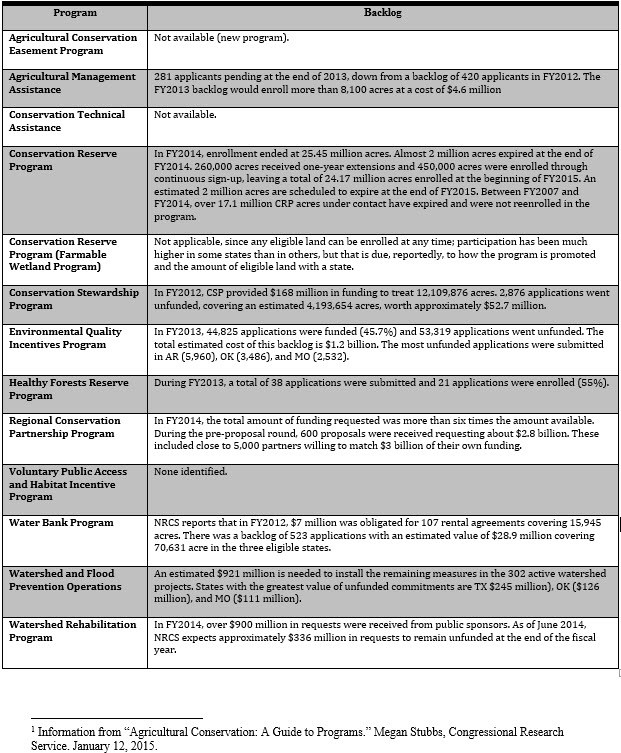I have long been a proponent of voluntary action as the best approach for addressing environmental concerns. But the ongoing cuts in conservation funding are now putting the success of that strategy at risk. What troubles me most is that no one seems to notice or care.
For me, there is a direct connection between the level of conservation spending through NRCS programs like the Environmental Quality Incentives Program (EQIP) and the Conservation Stewardship Program (CSP) and improvements in water quality and quantity, nutrient management and wildlife habitat. That should be obvious. Those programs assist landowners in establishing conservation practices that accomplish environmental objectives—and they work.
The agricultural community has long argued, rightly in my view, that voluntary efforts on the part of landowners, encouraged and partly funded through conservation programs, are the best way to go. But what happens when funding for those programs declines and fewer worthy conservation measures are applied? I am very much afraid that the voluntary efforts may prove insufficient to get the job done and forestall the regulatory approach.
I’ve heard from many farmers and farm organizations that U.S. EPA has overreached with its waters of the U.S. proposals. I agree. But where are those same individuals and groups when the appropriations committees are meeting and discussing how to address the deficit by making cuts? They need to be weighing in to support the value of conservation programs. Let me tell you why.
First, as the 2014 Farm Bill was being developed, the conservation title took a $6 billion cut—that’s 10 percent less than would have been spent otherwise. In FY 2015, EQIP was cut an additional $253 million and CSP enrollment reduced by 2.259 million acres. And these cuts are in addition to annual sequestration reductions, which for FY 2016 is expected to be 6.8 percent. Will another 10 percent be cut from conservation through the appropriations process to fund other programs at higher levels? We can’t keep cutting conservation year after year, time after time.
We’ve pieced together some information on the backlogs in major conservation programs in the chart at the end of this blog. You can see the details there. But, for example, our research shows that for FY 2012, CSP had 2,876 applications pending that would have covered conservation practices on nearly 4.2 million acres at a cost of $52.7 million. How much has that backlog increased over the past three years?
Or take EQIP. In FY 2013, NRCS funded 44,825 applications, but more than half of those who applied—an additional 53,319 applicants—were turned away. The total cost to cover this backlog? $1. 2 billion.
Unfortunately, you won’t easily find this information on the NRCS website. Rather, you’d have to turn to Congressional Research Service reports as we did, which is why the figures are several years old. We need to have a more transparent system, so we can know the full extent of the backlog and have a clearer picture of how reduced funding is affecting conservation.I support reducing the deficit, but I think conservation is taking an unfair hit, and the agricultural community and the conservation community need to pay attention and work at the grassroots level—visiting Congressional offices and letting elected and unelected officials know that deeper cuts for conservation are unacceptable. We don’t need more letters with 132 organizational names. We need more personal contacts from those who have a stake in these decisions. We need active lobbying by the farm and commodity organizations that truly influence the process. We can’t keep cutting conservation to wrestle the deficit down.
The balance carefully established in the 2014 Farm Bill allots about 80 percent of mandatory funding to nutrition programs with the remaining 20 percent of funds divided up primarily among crop insurance, commodities and conservation. However that balance is being skewed in the annual appropriations process—and conservation is losing out.
It’s time to speak out. If we don’t, we risk being unable to accomplish environmental goals voluntarily. Not only can voluntary actions forestall regulation, but full funding of those actions is necessary to curtail the expansion of regulation. And a regulatory approach would cost everyone more in the long run.
Silence is not golden. It’s a surefire way to get passed over again and again. As farmers and ranchers, we can’t afford it, and neither can the environment and resources we all share.
About the author: Bruce I. Knight, Principal, Strategic Conservation Solutions, was the Under Secretary for Marketing and Regulatory Programs at the U.S. Department of Agriculture (USDA) from 2006 to 2009. From 2002 to 2006, Knight served as Chief of Natural Resources Conservation Service. The South Dakota native worked on Capitol Hill for Senate Majority Leader Bob Dole, Rep. Fred Grandy, Iowa, and Sen. James Abdnor, South Dakota. In addition, Knight served as vice president for public policy for the National Corn Growers Association and also worked for the National Association of Wheat Growers. A third-generation rancher and farmer and lifelong conservationist, Knight operates a diversified grain and cattle operation using no-till and rest rotation grazing systems
#30

